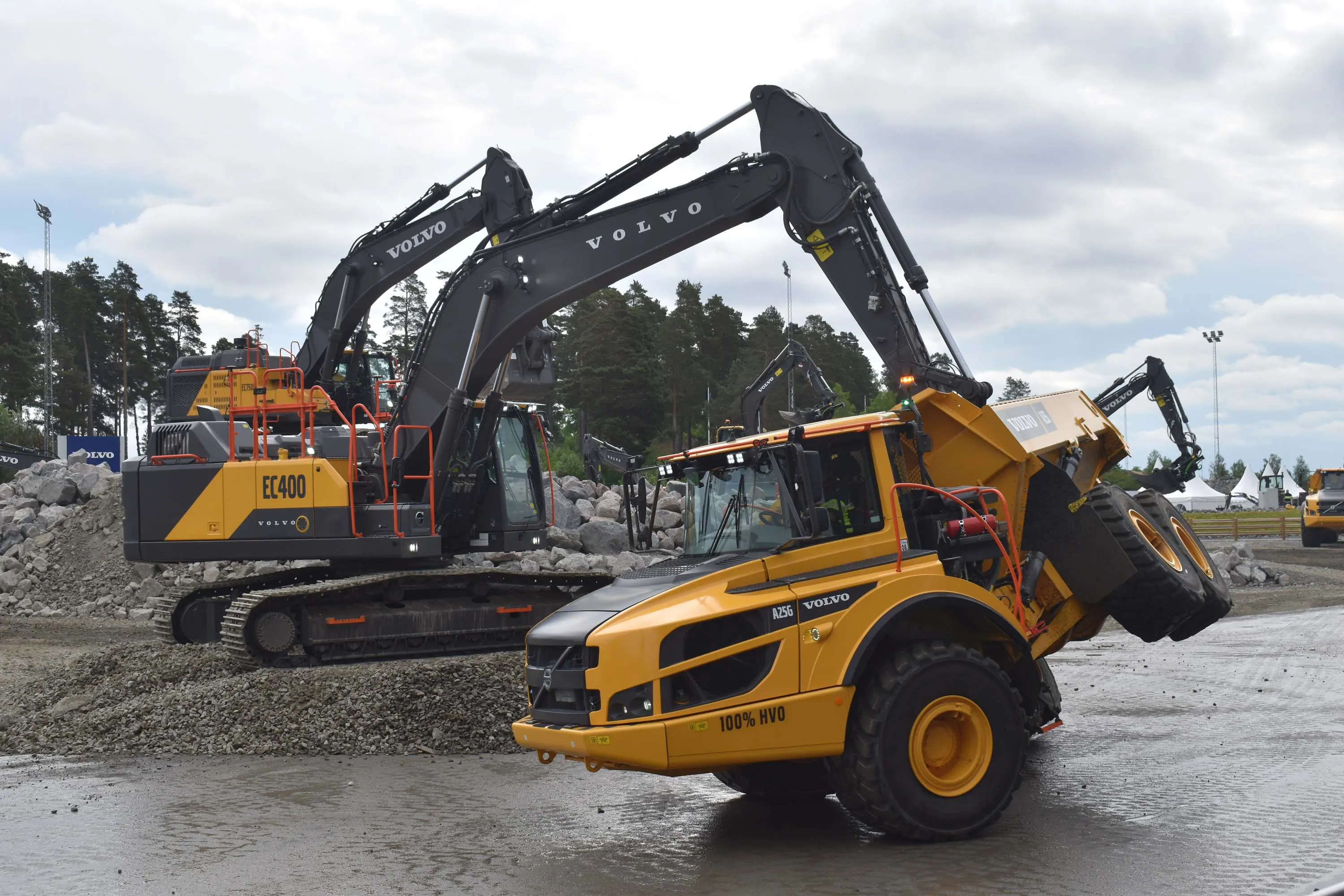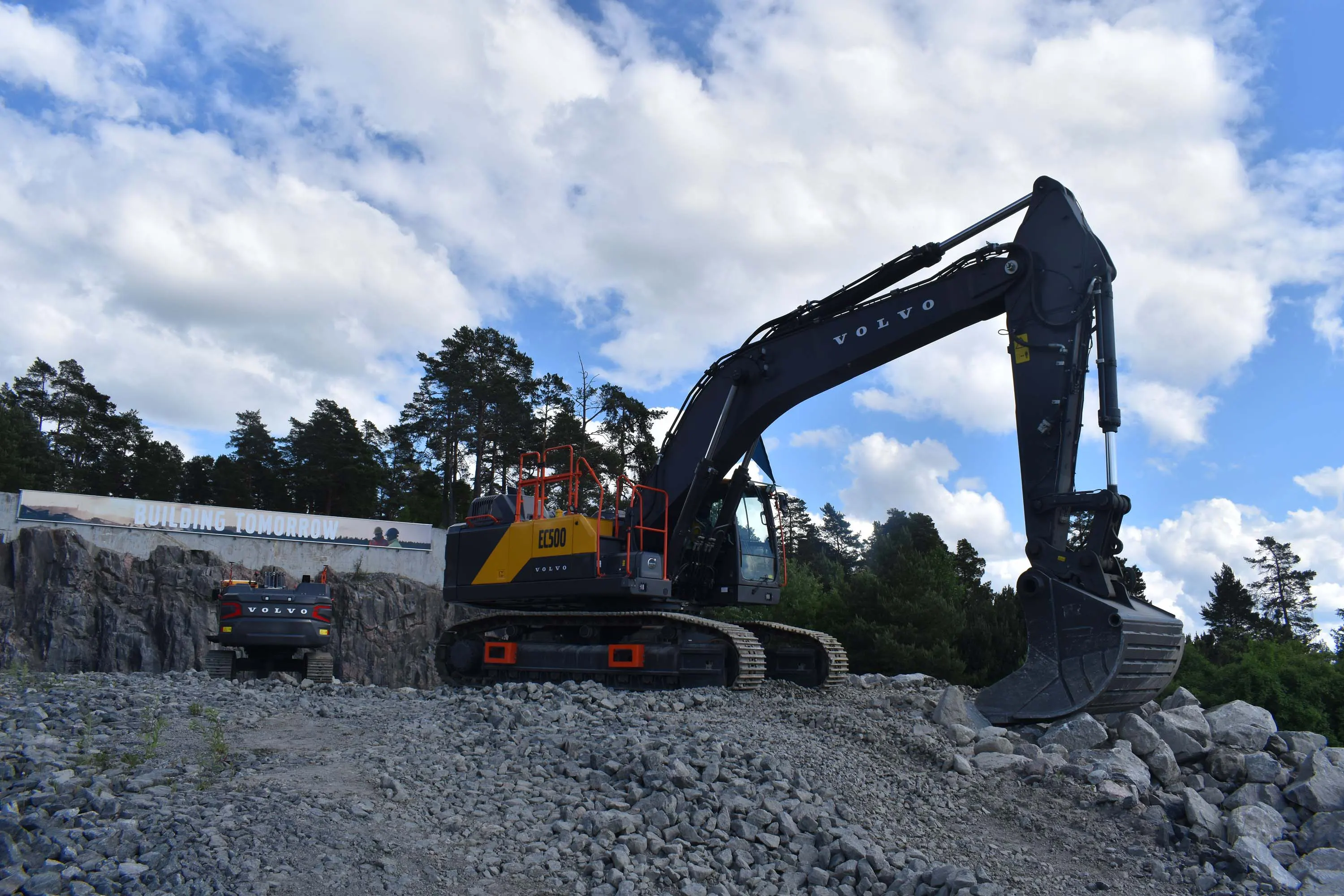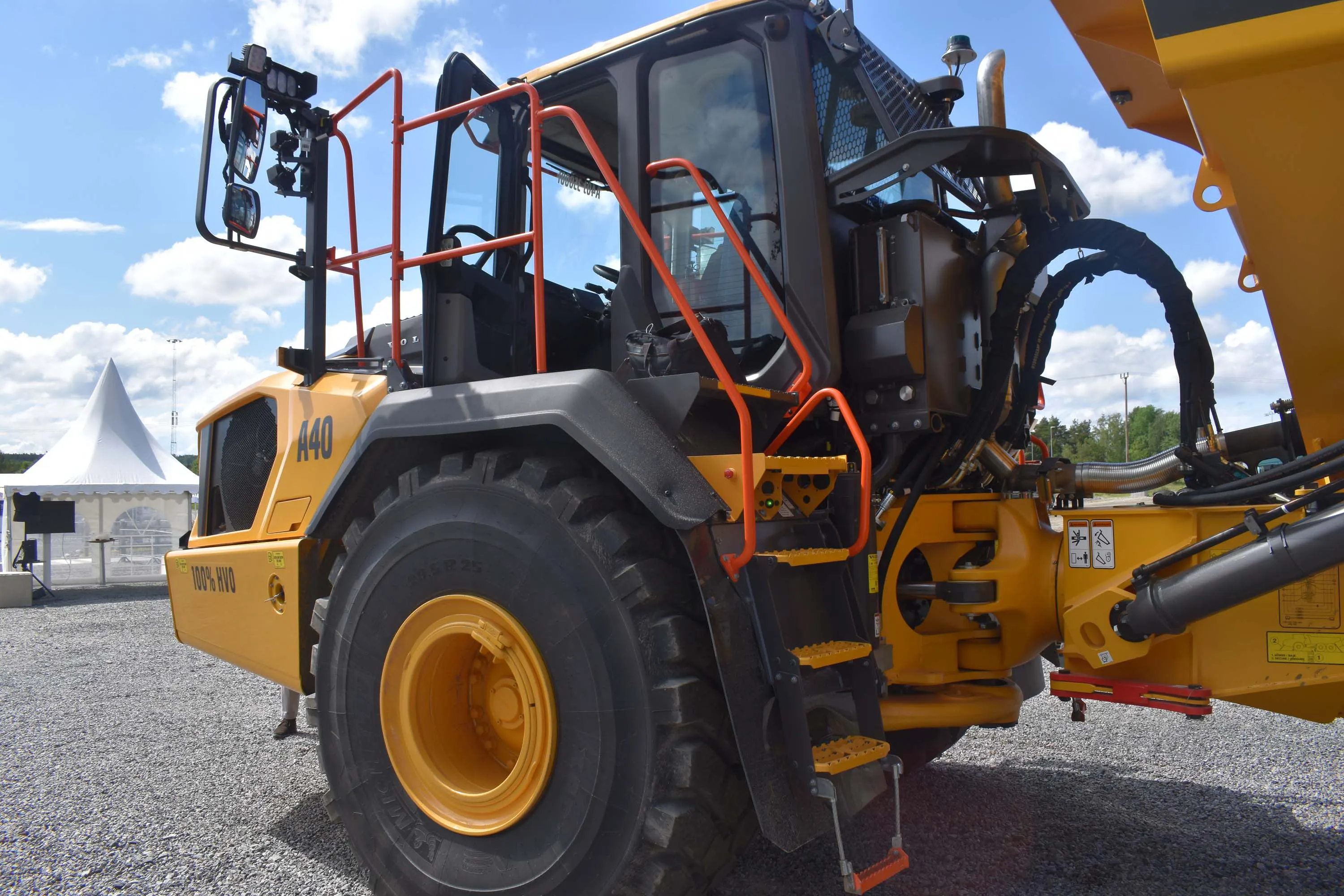
The opening demonstration closed with the message 'Change starts with us'. (Image source: ACP)
Volvo Construction Equipment has unveiled an ambitious product line-up in a bid to drive the construction and mining industry forward, empowering it to take a leading role in meeting the societal challenges of the future
This impressive launch was revealed at the company’s major showcase, Volvo Days, which is being held in Eskilstuna, Sweden. As the first event held here since the company officially moved its headquarters to the location outside Stockholm, the leading manufacturer of equipment in construction and related industries invited members of the international press to kick-off its flagship customer event.
Before the official press event and demonstrations on 29 May, the reporters in attendance – including African Review’s Robert Daniels – were treated to dinner at the birthplace of Volvo CE, the Munktell Museum. This presented the opportunity to learn about the landmark innovations that have been in its journey since its conception in 1832, before a lively dinner presided over by live music and introductory comments by members of the Volvo CE family.
The next morning, the showcase at Volvo CE headquarters began in earnest with a remarkable spectacle of operational excellence. On the field, drivers pirouetted a range of the latest company machinery in front of the on-looking crowd, performing tricks from synchronised excavations to an articulated hauler driving on its side. It was a display that demonstrated both the incredible skillset of the operators, and the versatility of the machinery in a bid to convey the message that was pushed at the presentations finale: ‘change starts with us’.

A new line-up launched
After heart rates returned to normal, the visitors were invited to a press conference hosted by senior company executives who outlined the innovations that are entering the market. This line-up, described as probably the most ambitious in the company’s history, comes off the back of an incredibly “strong” 2023 – Volvo Group as a whole marked a record year in its annual report and defined the period as one of ‘growth and improved profitability’. Further, as explained by Melker Jernberg, President of Volvo Construction Equipment, the revamped portfolio is being released as part of the company’s investment to be ready for change, contending with the various political, economic, social and technological drivers that are shaping the global business landscape (a particular emphasis was placed on the increasingly influential environmental playing field, with more and more companies committing to science-based targets to cut emissions). As such the company is executing a strategy – in collaboration with its partners which stretch across the value chain – to introduce new technologies, sustainable powered models and smarter solutions in order to remain competitive in the ever-evolving global playing field and ‘perform to transform the future’.
The pursuit of this ambition has led to the design and release of an exciting line-up. This included a new generation of excavators in the form of the Volvo EC500, EC400 and EC230; the launch of the R60 and R70 rigid haulers; a selection of new battery electric equipment such as the EWR150 Electric wheeled excavator, alongside the L90 Electric and L120 Electric wheel loaders; and the launch of the PU40 mobile power unit, an additional charging solution helping to support the company’s growing electric portfolio.
Those in attendance were also treated to a look at the new A40 articulated hauler arriving later this year, not to mention an overview of the company’s blossoming digital support which has been expanded through the release of the new My Equipment web-based app.
At home in Africa
A big focus of the reveal was the development of electrical machinery and equipment that was being delivered, in part, in line with net zero ambitions. With this representing a relatively nascent market on the African continent, African Review sat down with Joakim Arndorw, head of sales region international, to explore how Volvo CE is bringing together the ambition of having 35% of machines sales electric by 2030 with the reality of meeting African demands.
“I think there is a lot of development going on in Africa,” Arndorw remarked. “The whole green transition demands more minerals (amongst others demands) which are available in Africa, making the continent important for us going forward. We are strong in traditional mining income countries in Africa and, through our retail partners, our intention is to develop further. There is a perception that sustainability is not so interesting for Africa. I would disagree. Big mining companies, for example, are definitely on decarbonisation journeys and they are asking us how we can help them to do so, including in Africa.
“Volvo’s vision – the wider group’s vision – is that everything we sell should be net zero by 2040. A big part of that will be an electrified produce range through battery electric, fuel cell electric and grid-connected electric equipment. But we also understand that will not work for all markets, so we are also looking at other solutions with conventional combustion engines; with fuel that allows us to achieve that net zero ambition.”
Arndorw continued by noting that while battery electric machinery might be more limited in Africa and the challenge of weak grids is more pertinent on the continent, they are continuously working with companies there (especially in mining) to develop feasible solutions to ensure the green transition. Arndorw also nodded here to the potential of hydrogen-powered equipment which could have a big future in Africa if the production of this is ramped up here, as many commentators are expecting.
Overall, Arndorw made clear that Africa had played an important part in Volvo CE’s aforementioned success thus far (despite the number of machines sold being somewhat limited in relation to the European business for example) and it would remain a critical part of its (net-zero compliant) business plans going forward.
New generations for modern operations
As such, Arndorw pointed to features of the launch that would be particularly exciting for African customers. At the top of this list was the new range of Volvo CE excavators – the EC500, EC400 and EC230 – which boast a modern makeover and design to be more spacious, ergonomic and help customers achieve the best results at the lowest user cost possible. First introduced in Europe and Turkey, the machines have a range of cabin features to enhance operator experience ranging from a cool box to store items to a keyless engine start and always-on camera. Safety has been prioritised through the ability to pre-set limits on the boom’s depth, height and swing, alongside 360° visibility provided by Volvo Smart View with Obstacle clarification. Volvo CE has further highlighted the superior serviceability, enhanced precision and productivity, and improved fuel efficiency and total cost of ownership that makes the new machines a formidable new offering.
In discussing the excavators, Arndorw explained that this represented a two generation step for African users from the D series which is being sold in the region currently. “This next generation will have the option of either having a high-regulated market spec or a less-regulated market spec. It is important to note that this new generation will enable it with all the digital services and support that we have in Europe today.”

At the behest of Arndorw, African Review also paid a special visit to the all-new, 100% HVO compatible A40 articulated hauler that was on display and would be released soon. The new machine is being delivered to continue Volvo CE’s legacy as an industry pioneer of articulated haulers and was accompanied by company specialists at Volvo Days. These personnel explained that one of the fundamental advancements in the model is a new design with features a new entrance on the side rather than in the back corner (as sported by the A40G) and a more heavily-sloped hood to ensure far greater visibility and – therefore – safety in operations. This is also aided by the addition of extra lighting around the machine, which provide the dual benefit of also enabling the ability to perform maintenance in the dark. Further, in performing such activities, users will appreciate the gathering of features into service centres around the vehicle and easy access under the hood (where all filters are in front of the engine).
As the on-site specialist explained, every change to the A40 has been implemented with “serviceability and safety in mind”, a message that could certainly be applied to all of the new solutions unveiled in Sweden. The new ranges which incorporate such considerations in their product design while ensuring maximum performance, “prove that Volvo CE is well-equipped to respond to the different needs of our customers in both regulated and less regulated markets, leveraging our strength to implement meaningful innovation across all our offerings as we move closer towards our ambition for net zero greenhouse gas emissions by 2040,” as Arndorw stated in the company’s accompanying press release.





























